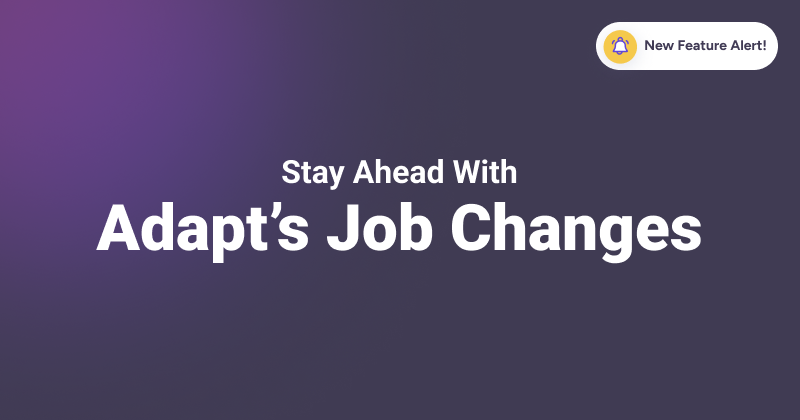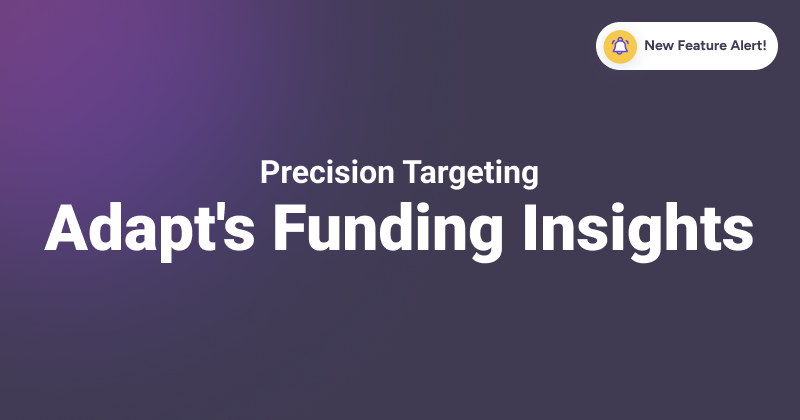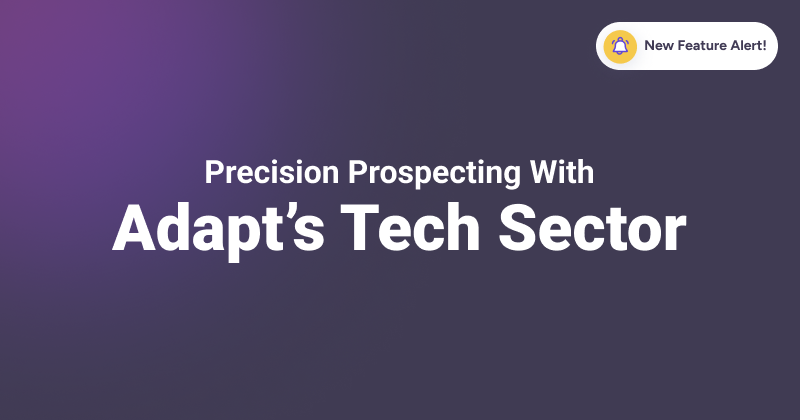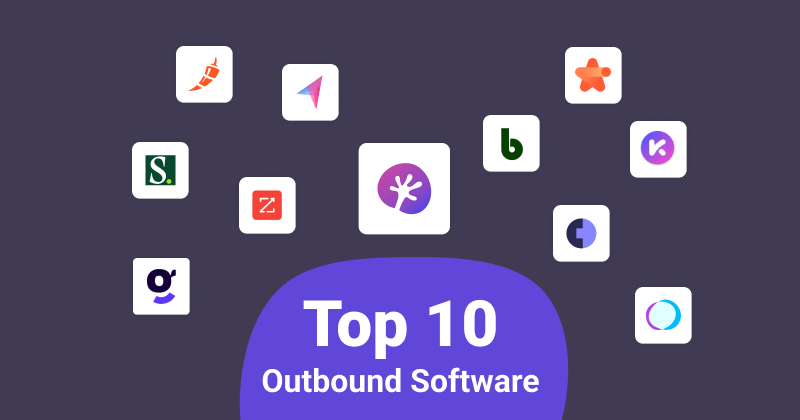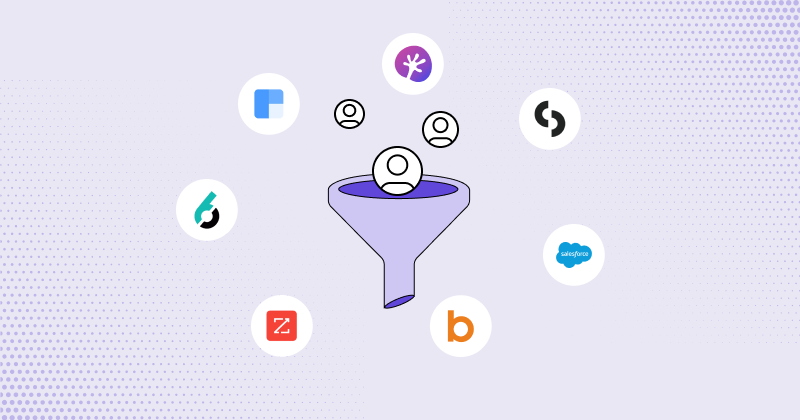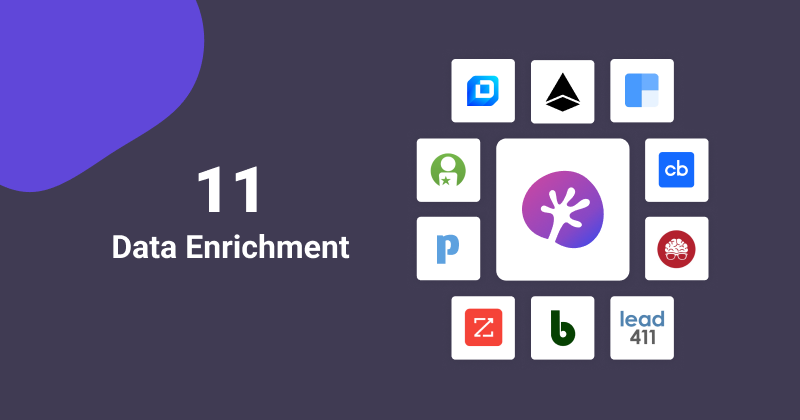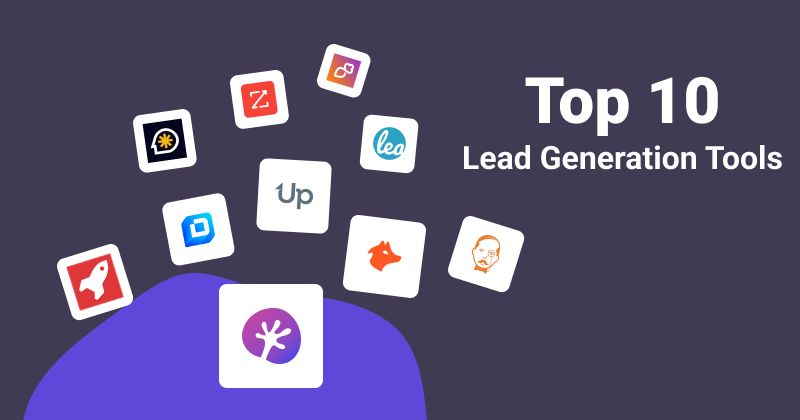Posted July 3, 2023
What is B2B Lead Generation?
B2B lead generation is the strategic process of identifying potential clients and persuading them to choose your product or service. It’s about meticulously profiling and targeting those prospects that align with your ideal customer profile. This pursuit of potential clients creates a demand for your product or service that can be quantified and used for strategic decision-making further. Moreover, the B2B lead generation process materializes the intent of potential customers, turning their initial interest into concrete actions, such as sign-up or demo requests. Importantly, it contributes to TOFU by populating it with qualified leads who have shown a genuine interest in your organization’s offerings. Essentially, it’s the linchpin for building a strong client base and driving business growth.
Why is B2B lead generation important for business growth?
B2B lead generation aids in running a successful sales cycle with continuous high-intent lead flow. It helps accelerate several factors that are necessary for the organization’s growth. Lead generation helps you:
- Discover Your TAM (Total Addressable Market): B2B lead generation is pivotal in helping your organization discover and define its Total Addressable Market (TAM). By identifying and targeting potential clients within your TAM, you ensure that your marketing and sales strategies are directed toward those businesses or individuals most likely to benefit from your product or service. This focus not only maximizes your resources but also increases the chances of conversions as you tailor your strategies to your ideal persona.
- Provide Contact Data: Lead generation is the primary source of contact data for your potential clients. It provides essential information such as email addresses, phone numbers, job titles, and company details. Having accurate and up-to-date contact data is crucial for reaching out to prospects, initiating meaningful conversations, and nurturing them through the sales funnel. It’s the foundation for establishing communication channels and building relationships.
Tools like Adapt help you source this crucial contact data and empower your sales and marketing teams for effective outbound campaigns. With more than 150M+ contacts, you keep pace with your prospects and close deals faster.
Build a targeted list of leads and improve your conversion rates.
Find leads from anywhere on the web with Adapt’s 150M+ verified contact database.
- Build a Predictable Pipeline: One of the significant advantages of B2B lead generation is its ability to build a predictable sales pipeline. By consistently generating leads and moving them through the various stages of the funnel, your organization gains visibility into future revenue streams. This predictability aids in sales forecasting, resource allocation, and overall business planning, helping to maintain stability and growth.
- Assist with Content Creation: Effective B2B lead generation often goes hand-in-hand with content creation. To attract and engage potential clients, you need valuable content that addresses their pain points and interests. This includes blog posts, whitepapers, webinars, case studies, and more. Lead generation efforts guide content creation by shedding light on the topics and formats that resonate most with your target audience, ensuring that your content aligns with their needs.
- Build Brand Awareness: Beyond just generating leads, B2B lead generation contributes significantly to building brand awareness. When your organization consistently reaches out to potential clients, whether through content, emails, or other marketing channels, it reinforces your brand’s presence in their minds. This heightened awareness increases the likelihood that they will consider your brand when making purchase decisions, even if they don’t convert immediately. Over time, this brand recognition can be a valuable asset for your business.
In summary, B2B lead generation is not just a single strategy but a fundamental component of a successful business. It helps you discover and focus on your ideal market, provides the necessary contact data for engagement, creates a predictable sales pipeline, guides content creation efforts, and builds brand awareness. By incorporating lead generation into your sales and marketing strategies, you lay the groundwork for sustained growth and success.
Types of B2B Leads

- Marketing Qualified Leads (MQLs): These are leads that have shown interest in your product or service but are not yet ready to make a purchase. They have typically engaged with your marketing content, such as downloading a whitepaper, subscribing to a newsletter, or visiting your website. MQLs are in the early stages of the sales funnel.
- Product Qualified Leads (PQLs): PQLs are leads who have interacted with your product or used a free trial or demo. They have experienced your product firsthand and may be evaluating it for potential adoption within their organization. PQLs are often further nurtured by the sales team to convert them into customers.
- Sales Qualified Leads (SQLs): SQLs are leads that the sales team has further qualified. They have demonstrated a higher level of interest and are more likely to convert into paying customers. This qualification often involves direct communication with the lead to assess their buying needs and readiness.
Lead Generation Process

- Identification of Prospects: B2B lead generation starts with identifying organizations or individuals who are potential customers for a product or service. This involves defining your target audience, including specific industries, job titles, or company sizes.
- Gathering Contact Information: Once you’ve identified potential prospects, the next step is to collect their contact information. This typically includes email addresses, phone numbers, and sometimes more detailed data, such as company names, positions, and geographic locations.
- Engagement and Outreach: B2B marketers engage with these prospects through various marketing channels after gathering contact information. Common methods include email marketing, content marketing, social media marketing, and even outbound calling or networking at industry events.
- Providing Value: Effective B2B lead generation strategies focus on providing valuable and relevant content to prospects. This content can be blog posts, whitepapers, webinars, case studies, or any other content that addresses the prospects’ pain points and needs.
- Qualification: Not all leads are equally valuable. B2B marketers use lead scoring and qualification criteria to determine which leads will most likely convert into customers. This step helps prioritize efforts and resources on leads with the highest potential for conversion.
- Nurturing: Once leads are identified and qualified, a nurturing process begins. This involves staying in regular contact with leads, providing them with more relevant information, and gradually guiding them through the sales funnel.
- Handoff to Sales: When leads reach a certain level of interest and readiness to make a purchase, they are handed off to the sales team. This transition is a critical step in converting leads into paying customers.
- Measurement and Optimization: B2B lead generation efforts are continually monitored and optimized for better results. Metrics like conversion rates, cost per lead, and return on investment (ROI) are tracked to ensure the effectiveness of lead generation campaigns.
Who are the Key Players in B2B Lead Generation?
The key players in B2B lead generation are sales & marketing teams. To understand the intricacies better, let’s dive deeper into the key players and their roles in the process:
Marketing: In B2B lead generation, the marketing department plays a critical role by creating awareness and interest in the organization’s products or services. Marketing generates leads through various channels like content marketing, social media, and email campaigns, effectively bringing potential clients into the sales funnel. They create valuable content that educates and engages the target audience and use lead scoring to identify promising leads. Marketing is also responsible for nurturing leads over time, using personalized communication and drip campaigns to warm them up for the sales team. Additionally, marketing closely monitors data and metrics, using marketing attribution tools to assess the effectiveness of lead generation efforts and make data-driven decisions to optimize strategies.
Sales: Conversely, the sales department takes over once leads are identified and qualified by marketing. Sales professionals further qualify leads by assessing their readiness to purchase and specific needs. They initiate direct contact, engage in personalized conversations, and build relationships with potential clients, aiming to establish trust and credibility. The ultimate goal of the sales team is to close deals by presenting proposals, negotiating terms, and guiding leads through the decision-making process. They also provide valuable feedback to marketing regarding lead quality and continue to engage with customers after the sale to ensure satisfaction and explore upselling opportunities. Sales play a vital role in converting leads into paying customers and maintaining long-term relationships.
B2B Lead Generation Channels
B2B lead generation channels are the various platforms and methods through which businesses can identify, attract, and engage potential clients within other organizations. These channels offer diverse ways to reach target audiences and generate leads. Here are 10 of the most common B2B lead generation channels:
- Website and Landing Pages: A company’s website is a central hub for lead generation. By optimizing landing pages, forms, and content, businesses can attract and capture leads directly from their website.
- Content Marketing: Sales-y advertisements won’t suffice in attracting customers anymore. To generate B2B leads, you need to establish your expertise in the field. Quality content does that for you and shows the value you bring to the table. According to reports, 60% of B2B marketers have successfully used content to generate leads.
Consistently distribute valuable information across your marketing channels. To attract B2B market segments with high conversion rates, curate content like:- Case studies
- Blog posts
- White Papers
- E-books
- Infographics
- Expert interviews
Focus on creating intent-driven and SEO-optimized web content for your landing pages. This will significantly increase sign-ups and bring more leads.
- Social Media: Platforms like LinkedIn, Twitter, and Facebook are valuable for connecting with potential clients, sharing content, and driving traffic to your website or landing pages.
Here’s how you can do it:
a. Talk about your mission and vision to create an impact.
b. Share your employees at work, sneak peeks of new launches, and client testimonials to boost authenticity.
c. Use social listening tools to track client queries and answer them quickly.
d. Have a consistent posting frequency that’s scheduled for when your target audience is the most active. Email Marketing: Even with social media buzz, email remains one of the most reliable B2B lead-generation tools. Your target audience is CEOs and business executives who don’t have the time to browse social media. But email is one channel they can’t do without.
Strengthening your email marketing will keep a steady flow of B2B leads. With a segmented list and personalized emails, you can reach out to valuable contacts and nurture them further. It will also actively reengage customers with customized content and relevant offers.
Keep your email copy concise. Design it for easy skimming with suitable fonts and colors. Don’t forget to include persuasive CTA buttons.
Search Engine Optimization (SEO): SEO tactics ensure that your website and content rank well on search engine results pages (SERPs), making it easier for prospects to discover your offerings.
Pay-Per-Click (PPC) Advertising: PPC campaigns on search engines and social media platforms can drive targeted traffic to landing pages, offering an immediate lead generation opportunity.
A smart pay-per-click strategy can bring quality leads and improve the sales funnel for both B2B e-commerce and agencies. If you have a decent budget, use Google or Bing ads to attract clients. You can also try native or social media ads.
- Webinars and Online Events: Hosting webinars and virtual events positions your organization as an industry thought leader and generates leads from attendees.
- Referral Marketing: Encouraging satisfied customers to refer other businesses to your services can be a powerful source of leads.
- Networking and Industry Events: Attending or hosting industry-specific events, both online and offline, provides opportunities to connect with potential clients and generate leads.
- Content Syndication: Sharing your content on third-party platforms or industry publications can expand your reach and attract leads interested in your niche.
Top B2B Lead Generation Tools'
Understanding why lead generation tools are crucial sets the stage for success. In the competitive landscape of B2B, these tools act as your trusted allies, streamlining the process, boosting efficiency, and ensuring you capture and nurture potential clients effectively. Each tool can be clubbed under various lead generation channels. You can pick the best tool for each of the channels you want to generate leads from:
1. Email Finder Tools
Email finder tools are essential for marketers seeking valid email addresses of potential leads or contacts. These tools employ diverse methods to locate emails based on names, job titles, company domains, or other data. They streamline the process of building targeted email lists, saving marketers valuable time and effort. Here are the top email finder tools that aid you in lead generation:
- Adapt
Adapt.io is a comprehensive lead intelligence platform that offers powerful lead generation features. You can leverage Adapt.io to qualify leads based on essential data attributes. With access to a vast database of 200M+ verified contacts, you can build a prospects list and effortlessly convert leads into customers. It also integrates with your CRM to leverage accurate data and increase the flow of qualified leads into your sales pipeline. - ZoomInfo
ZoomInfo is a comprehensive B2B data platform that provides valuable company and contact information to sales, marketing, and recruiting professionals. It is widely recognized as a leading data intelligence tool that enables businesses to access accurate and up-to-date data about companies and individuals to fuel their growth strategies. - Apollo
Apollo.io is a comprehensive sales engagement platform that offers a suite of tools designed to empower sales and marketing teams with data-driven insights, contact information, and automation capabilities. It aims to help businesses identify and connect with their ideal prospects, manage leads effectively, and streamline sales processes.
2. Social Marketing Tools
Social Media Marketing is the strategic use of platforms like Facebook, Instagram, Twitter, and LinkedIn to promote brands, engage audiences, and drive business results. It involves planning, content creation, advertising, and performance analysis. By mastering this, organisations can boost their online presence, connect with prospects, and build their lead generation engine. Here are the top social media marketing tools:
Buffer
Buffer is a trusted social media management platform used by brands, businesses, agencies, and individuals. It offers a user-friendly dashboard for creating, scheduling, and publishing content on platforms like Facebook, Twitter, Instagram, LinkedIn, and Pinterest, driving engagement and results.- Hootsuite
Hootsuite is a social media management platform for individuals and businesses. It offers a centralized dashboard to efficiently schedule, analyze, and engage across multiple social media accounts, helping users maximize their online presence. - Mention
Mention is a social listening and media monitoring solution that helps brands and agencies understand audience sentiment across social media and the web. It enables easy tracking of brand mentions, provides industry analytics, and measures marketing and PR effectiveness. Founded in 2012, Mention serves over 750,000 users in 125+ countries, including 4,000+ enterprise clients.
3. Lead Capturing Tools
Lead capture is the process of gathering information from potential customers who express interest in a product or service through channels like websites, social media, or emails. After capturing leads, the focus shifts to lead conversion, involving nurturing and engagement to guide them into becoming paying customers. Successful conversion relies on personalized communication, targeted marketing, and valuable content. The end goal is to transform prospects into loyal customers, driving business growth. Here are the top lead capturing tools:
- HubSpot
HubSpot is an all-in-one marketing, sales, and customer service platform that helps businesses attract, engage, and delight customers. It provides a suite of integrated tools and features to manage and automate various aspects of digital marketing and customer relationship management (CRM). - Unbounce
Unbounce is a user-friendly landing page builder and conversion optimization tool. It empowers businesses to create and enhance high-converting landing pages effortlessly, all without requiring coding or technical expertise. It offers customizable templates and conversion-focused features through a simple drag-and-drop interface. - Typeform
Typeform is an online form and survey tool that allows businesses to create interactive and engaging forms, surveys, quizzes, and other types of data collection forms. It provides a user-friendly interface, a variety of question formats, and customizable design options.
Why is Adapt the best B2B lead generation tool?
Adapt is a lead intelligence platform that provides a B2B contact database for sales and marketing to run outbound campaigns, generate leads, and close deals faster than ever with the right decision-makers.
The platform offers various solutions, such as lead enrichment with over 20+ data parameters to enhance existing lead databases, as well as APIs to facilitate the enrichment of customer data. With Adapt.io, you can confidently reach out to your ideal prospects and optimize your sales efforts.
- Data Accuracy: Provides accurate and verified B2B contact information essential for successful email marketing campaigns.
- Extensive Database: One platform with a 200M+ B2B contact database across various industries and regions allows you to build a hyper-personalized email list.
- Advanced Search and Filtering: Offers robust search and filtering capabilities, making it easier for users to narrow down the target audience based on specific criteria like industry, revenue, department, role, technology, and more.
- Integrations: Provides seamless integration with other marketing and sales tools, streamlining reaching out to potential clients.
- Customer Support: Being one of the best B2B email list providers, Adapt.io offers their users proactive customer support and assistance 24*7.
What is the difference between B2B lead generation and demand generation?
The primary difference between B2B lead generation and demand generation is the former collects information from interested prospects to turn them into paying customers, and the latter creates that interest in the first place.
Demand generation makes your audience aware of your brand and your product. It cultivates interest and, in turn, demand. Prospects explore your offerings and lead generation boosts.
Are there ways to get B2B leads for free?
If you know the right direction, B2B lead generation isn’t always expensive. You can run targeted email campaigns for free. Create valuable content for your social media, share stories, and conduct other engaging activities online. You will reach more people and onboard more clients.
Who are the typical users of B2B leads?
The typical users of B2B leads are its sales and marketing departments. These two departments use B2B leads to understand their audience, design customized campaigns, and effectively communicate with the decision-makers. It helps them figure out the best way to deliver the pitch, run multi-channel campaigns, convince the viewers, and drive more sales.
What are the essential steps in the B2B sales process?
In this step, B2B companies gather contact information of people who’ve expressed interest in their product. They compile contact lists so the sales team can later reach out and pitch the products.

Want highly accurate prospect data that really matters to your business? Start your free trial with Adapt.
- Lead qualification
In this stage, the teams analyze the customer to understand their needs. Here you need to focus on their problems and examine whether you can solve them. Many companies use lead scoring systems to measure the lead’s suitability as a customer.
- Pitch
This is the step where you need to get creative. Every client faces different issues. So, your pitch needs to be highly personalized and detail how your solution can tackle their individual problems. Try providing real-life data to add to your credibility and boost the chances of conversion.
- Handling objection
Don’t expect your prospect to say yes right away at the end of your pitch. It’s natural for them to have questions. They may even object to some of your claims.
Instead of flat-out denying the lead’s perspective, listen to them patiently, acknowledge their objection, and see what’s causing their doubts. This way, you can reposition your offer and answer their queries.
- Closing the sale
By this stage, you have convinced the lead to purchase your product. Now is the time to negotiate and mutually agreeable offer. Consider adding some add-ons and push the lead over to the last step.
- Check-in
Checking in with the customers after selling them helps you detect any issues they may face. This stage shows clients that the business values their experience and is crucial to maintain long-term client relationships.
How do I begin with B2B sales?
To begin with B2B sales, the first two things you need to do are determine your value proposition and identify your ideal customer.
The market is competitive. So you need to give your customers something unique for them to root for you. Examine how your services solve real-life problems and make a difference. While forming your value proposition, highlight exactly how your product solves a problem.
For example, if you sell productivity-centered SaaS, say, “Our services will speed up your operations with automation.”
How can I improve my B2B sales in person?
To improve your B2B sales in person, remember the following points:
- Be thorough in your research. A successful B2B sales rep knows their market, their customer’s preferences, and how the competitors are performing.
- Practice active listening. This way, you will notice customer doubts and resolve them quickly.
- Pitch with a blend of qualitative and quantitative information. You don’t have to detail every feature. Instead, show them numbers on how your product has solved similar problems successfully.
- Keep the tone polite and welcoming.
- Follow up after closing and religiously check in to gauge client satisfaction.
How do I increase my B2B followers on social media?
Here’s what you can do to increase your B2B followers on social media:
- Understand what appeals to your audience and curate social media content specific to their interests and problems.
- Add infographics, tutorials, and short video content to make your profile more vibrant and engaging.
- Use hashtags.
- Make your posts relatable by sharing personal experiences or employees’ day-to-day activities.
- Use page analytics to see when your target audience roams the space, figure out an optimal posting time and stick to it.
- Host giveaways.
- Start a community to discuss industry-related information and network.
- Interact with your audience through comments.
- If you have an active presence on Facebook and Instagram, share your posts on stories.
- Go live on platforms like LinkedIn, Facebook, and Instagram. You can also host Twitter spaces and collaborate with industry experts to share insights here.
Why is B2B lead generation important for businesses?
Besides driving sales and revenue, B2B lead generation is consequential for several reasons:
- Without proper leads, B2B companies won’t have the opportunity to convert prospects into paying clients.
- Lead generation allows sales teams to look into the prospect’s problems and offer them the best solution.
- By analyzing customer data, the marketing team runs better personalization and targeting through campaigns.
- Lead generation makes it easy to follow up and reengage customers in the future.
What are 4 efficient lead generation strategies for B2B marketers?
The four efficient lead generation strategies for B2B marketers are:
- Social media marketing: Running targeted ads and content on LinkedIn and Twitter helps you reach the relevant audience and bring traffic to your website.
- Cold emails: Contacting people who haven’t opted for your email marketing widens your scope and brings in more and better leads.
- Web lead-generation form: Almost 50% of marketers still claim the lead-generation form to be their most effective tool for collecting quality leads. The key here is to keep the process easy but ensure you collect all the data.
- Forums: Join online B2B forums on platforms like Quora, Reddit, and others to gain insights into customer needs. This way, you can target people who fit into your ideal buyer’s image.
What are the best practices for nurturing and converting B2B leads?
The top best practices for nurturing and converting B2B leads are:
- Segment and score your email list
One common approach will not work for every lead on your list. To target and nurture leads properly, you need to categorize them according to their preferences, industry, size of the workforce, etc.A segmented email list will lead to better personalization in email campaigns. You can offer each customer tailored solutions and enhance the chances of conversion. Make a thorough lead qualification checklist so you don’t miss any important factors. - Practice active listening
Engage with your leads to gauge their expectations and areas that need more convincing. This way, you can recognize instances where you need to nudge them toward taking the desired action. Note down your lead’s concerns and actively work to turn this reluctance into conversion. - Evaluate your lead nurturing strategy
Regularly examine the efficacy of your lead nurturing and conversion strategy. This will help you identify opportunities you may have missed and improve the process in the future.Factors you need to evaluate here are:
– Number of leads you got during a specific period
– Your average response time
– What approach you took to nurture each prospect
– Conversion rates for different tactics used with lead personas - Use automation to streamline the process
Your timing needs to be precise to convert maximum leads into paying customers. You must send the right email at the right time to convince each prospect. Doing this manually is an error-prone task and can cause your lead to turn cold.
Posted July 3, 2023
Build a targeted list of leads and improve your conversion rates
Find leads from anywhere on the web with Adapt’s 150M+ verified contact database.
![What is B2B Lead Generation? [Complete Guide]](https://42148.htcpne.asia/wp-content/uploads/2023/07/B2B-Lead-Generation-1.png)
